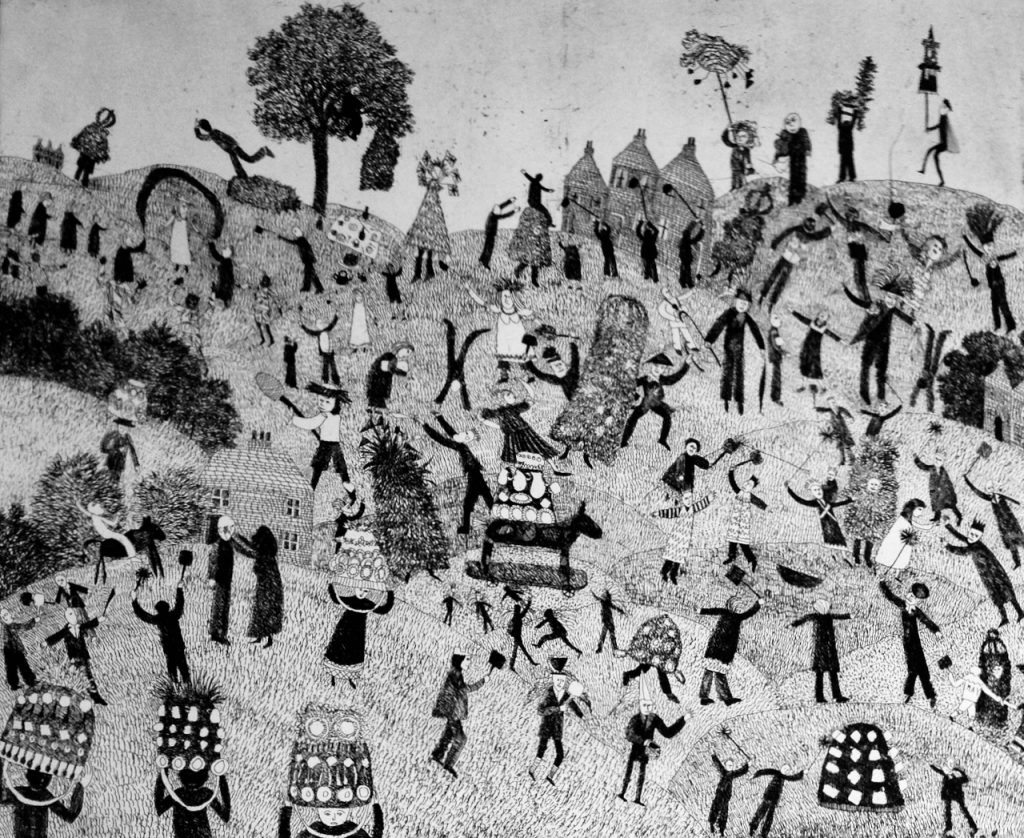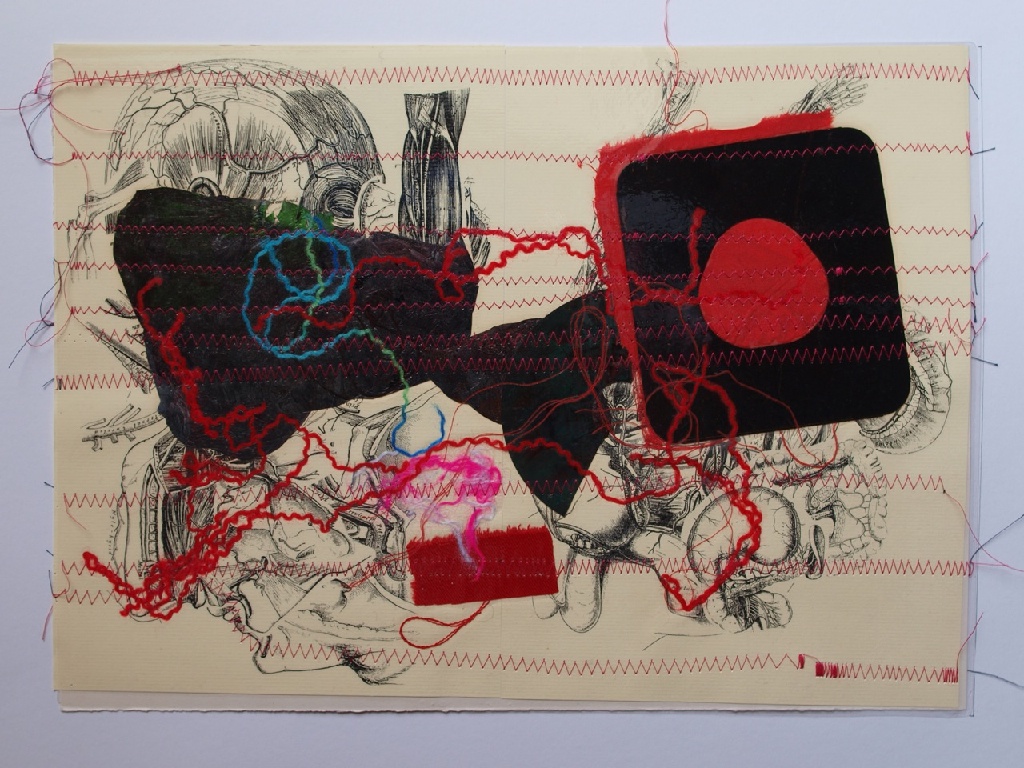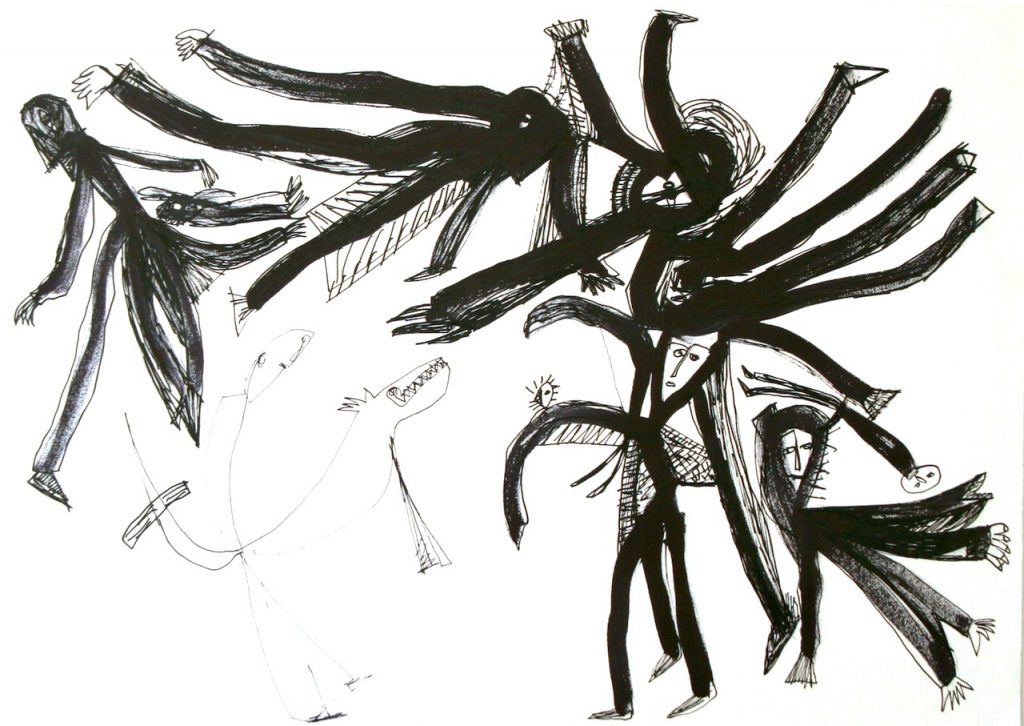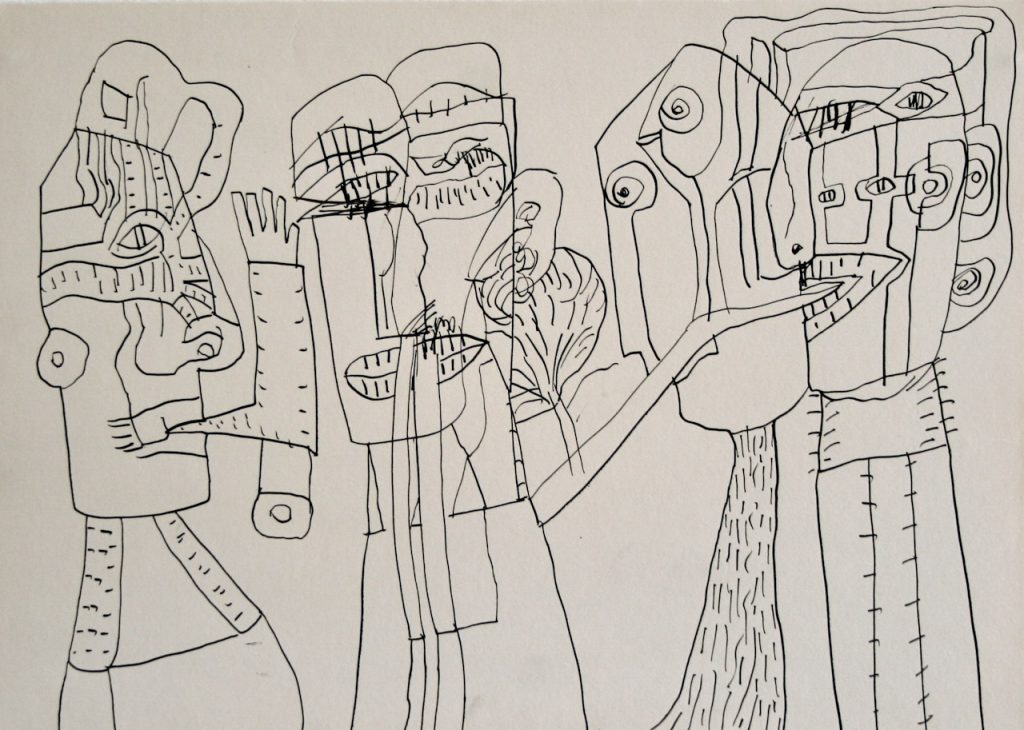You said, ‘First came the wings and then the angel.’ We never noticed these words in Scripture, Holy Abbot. How could you have noticed them? Alas, your minds are still dim. You open the prophets and your eyes are able to see nothing but the letters. But what can the letters say? They are the black bars of the prison where the spirit strangles itself with screaming. Between the letters and the lines, and all around the blank margins, the spirit circulates freely; and I bring you this great message: Friars, first came the wings and then the angel!
(N. Kazantakis, The Last Temptation of Christ, quoted in N.O.Brown, Love’s Body p.196)
For fifty years the artist Dave Pearson created his own work, in an impressive variety of media, whilst most of that time teaching art full-time (at Foundation level). Although he did have several exhibitions during his lifetime, including a herculean three-dimensional tribute to Van Gogh, and a monumental body of work on the theme of Yeats’s ‘Byzantium’, there is a real sense in which the bulk of his work remained unknown, if not secret. At his death he left behind approximately twenty thousand works, ranging from scrapbooks (a mine of interest, I suspect), drawings, prints and sketches to large-scale paintings and reliefs, not to mention the larger-than-life Van Gogh figures. He might have seemed from the outside to be a quiet, reserved man, and a consistently supportive teacher; but he also had a rebellious if not anarchic streak, and formidable determination. However, to judge by his work, the inside story was rather different: here was a man driven by a creative momentum that was in many ways overpowering and ruthless, even if it was sometimes laced with joy and humorous invention.
I wonder whom creativity belongs to? For sure, it inhabits the individual and bears their personal stamp – an instantly recognisable one in Dave Pearson’s case – but it does not belong solely to them, and this is what makes it, however humbly it manifests itself, on occasion so awe-inspiring. The paradox is that the resulting work is often at once personally expressive and eerily impersonal. Plato’s notions of mania or possession by gods or spirits, one version of which was associated with the art of poetry, are the ancestors of what we now tend to see as the individualised ‘genius’. It was indeed a powerful and dangerous gift, which sometimes broke the human vessel that it was poured into, and which was valued precisely because it came from Somewhere Else. Certainly the big themes that preoccupied Pearson – whatever is conjured up by Byzantium, his prolonged visual meditations on the Book of Revelations and even his detailed studies of English calendar customs – testify to this.

This mythological or archetypal dimension is evident in much of Pearson’s work, and it was certainly consciously embraced at times; but that is not what I want to reflect on here. The origins of art-making are nowadays often referred to in terms of an anonymous, quasi-instinctual drive (Jung’s ‘creative instinct’, Prinzhorn’s ‘configurative urge’ or Ehrenzweig’s ‘unconscious form creation’, for example) and this gives a scientific or psychological cast to our picture of creativity. Yet the actual experience of the work taking on a life of its own in the process of its making can still carry the aura of visitation or possession: the element of compulsion, the feeling of being driven to create, stem from this. Some artists (myself included) find ways of boxing this in, and I wonder whether some of Pearson’s major projects didn’t serve the same purpose, acting as containers or channels for what might otherwise be overwhelming. The pictures of his studio spaces after his death, crammed with work present an image of something almost like a creative conveyor-belt: unstoppable and indifferent to what happens at its end.
These drawings are exhilarating in their sheer verve: his use of line, most often fractured, textured and inflected in an astonishing variety of ways, is riddled with playful invention, and this is punctuated by sudden passages of darker density.

The work I want to focus on is from the very last years of Pearson’s life, after he had returned home from hospital but nevertheless – or rather, on that account – continued to work. I find these drawings, which at first sight look like a series of free-range doodles, easier to access than some of the larger-scale, more heroic pieces. There are perhaps a hundred or more of these identical sized sheets (approximately A1), and they give out a feeling that is a mix of freedom and compulsion: the pencil free-wheels all over the place, an impressive variety of textures results, and from this seething tangle of lines suggestions of faces and figures emerge, which are sometimes rendered quite explicit. It’s as if they float up from, and disappear back into, a matrix of potential forms. I believe that what we see here is something of the hyper-fertile and thoroughly ploughed over ground out of which so much of Pearson’s work emerged.
These drawings are exhilarating in their sheer verve: his use of line, most often fractured, textured and inflected in an astonishing variety of ways, is riddled with playful invention, and this is punctuated by sudden passages of darker density. His confidence is remarkable: there seem to be no hesitations or revisions, let alone erasures. He’s like a virtuoso improvising musician showing off his paces, and if there are occasional familiar riffs, these are just trampolines for further, more adventurous elaborations to bounce off. I can sense the glee, the pleasure, and the odd seasoning of malice, in them. Of course, being Pearson, faces and figures put in an appearance, sometimes looking as if they’d gate-crashed, and in quite a number of these drawings they command leading roles. But for me it is the less obviously figurative drawings that conjure up something like a compost heap, or even a kind of Sargasso Sea, of vigorously defined shapes that are nevertheless on the edge of recognisability. Such works can be seen as pictures of an embryonic world in tumultuous ferment, and I’m sure that in them the drawing process itself generated as much as anything that might have already been in the artist’s mind.
Beyond all this, these drawings vividly convey the ‘rush’ of Pearson’s creativity: not only its power, but also its restless and relentless character. Creativity is not just a matter of having certain gifts or skills and of being able to marshal them to some end – that is, of course, a phenomenon frequently found, and enshrined in popular ideas about what it is to be an artist – it involves surrendering, in ways that each artist has to discover for themselves, to forces that are beyond our conscious control. We can fight them or we can choose to follow their lead. Acknowledging the image’s power means submitting to forces that may shock as well as surprise (even if it is sometimes the spectator who is more shocked than the artist). An image can possess the artist just as easily as the other way around.

These creative and psychological forces are imaginal, in the sense that their currency is image. As Jung wrote: ‘Image is psyche’. Trafficking in these images, or rather, treating them seriously, opens a door into an imagination that is far removed from what Coleridge called ‘fancy’, and this is territory familiar to many visual artists. Following Jung, James Hillman wrote that ‘… these images which are the very stuff of our souls, are the only givens directly presented. Everything else- the world, other persons, our bodies- are mediated to consciousness by this poetic ancestral factor, the image. Whatever we say about the world, other persons, our bodies, is affected by those archetypal fantasy images. There are Gods and daimons and heroes in our perceptions, feelings, ideas, and actions, and these fantasy persons determine how we see, feel, think, and behave, all existence structured by imagination.’ (Hillman 1983, p. 75). I think that some artists, like Dave Pearson, actively go out to conjure up and meet with such images; but the effects may not always be obviously illuminating or strictly therapeutic for them personally. In fact it’s as if they are functioning as conduits of the imaginal, and this may sometimes be of more benefit to us than to them.

In Plato’s model of manic inspiration, the inspired poet-seer (or in this case the visual artist) was a vehicle for messages the full meaning of which had to be spelt out by others. In the case of visual art, this is complicated by the fact that not all these messages are representational or figurative; or rather, that the envelope of material form is itself as much a part of the message as what it may contain or display. The post-hospital drawings Pearson made show this all the more clearly because the layerings and superimpositions so often to be found in his painting are almost entirely stripped away, revealing a labyrinthine matrix of potential form created by dancing and weaving lines. Is this in itself an image, and if so, in what sense? Apart from anything else, it can be seen as a picture, not of the ‘unconscious’ in a psychoanalytic sense, but of something wider and deeper, of which Dave Pearson was an intrepid explorer.
COPYRIGHT: David MacLagan 2012
